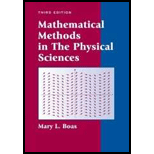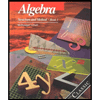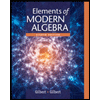
Concept explainers
Use (12.9) to show that:
Want to see the full answer?
Check out a sample textbook solution
Chapter 12 Solutions
Mathematical Methods in the Physical Sciences
Additional Math Textbook Solutions
Differential Equations: An Introduction to Modern Methods and Applications
Introductory Combinatorics
Mathematics with Applications In the Management, Natural, and Social Sciences (12th Edition)
Mathematics with Applications In the Management, Natural and Social Sciences (11th Edition)
Using & Understanding Mathematics: A Quantitative Reasoning Approach (7th Edition)
Thinking Mathematically (6th Edition)
- Algebra & Trigonometry with Analytic GeometryAlgebraISBN:9781133382119Author:SwokowskiPublisher:Cengage
 Algebra: Structure And Method, Book 1AlgebraISBN:9780395977224Author:Richard G. Brown, Mary P. Dolciani, Robert H. Sorgenfrey, William L. ColePublisher:McDougal Littell
Algebra: Structure And Method, Book 1AlgebraISBN:9780395977224Author:Richard G. Brown, Mary P. Dolciani, Robert H. Sorgenfrey, William L. ColePublisher:McDougal Littell
 Elements Of Modern AlgebraAlgebraISBN:9781285463230Author:Gilbert, Linda, JimmiePublisher:Cengage Learning,
Elements Of Modern AlgebraAlgebraISBN:9781285463230Author:Gilbert, Linda, JimmiePublisher:Cengage Learning,



